Rome does not keep its past hidden behind gates or inside museums. The historical places in Rome are not quiet, they speak through worn steps, carved marble, and the spaces they still hold. Ancient walls support newer buildings, broken columns rest in city squares, and centuries-old stones lie underfoot as you walk. The city is built on memory, layer after layer, and every part of it has a story that was not written down but lived. Some remain tucked away in silence, while others are surrounded by the noise of crowds and cameras.
Top 10 Must-Visit Historical Places In Rome
The following historical places in Rome show the city’s past, not as something lost, but as something that continues.
1. The Catacombs Of Domitilla
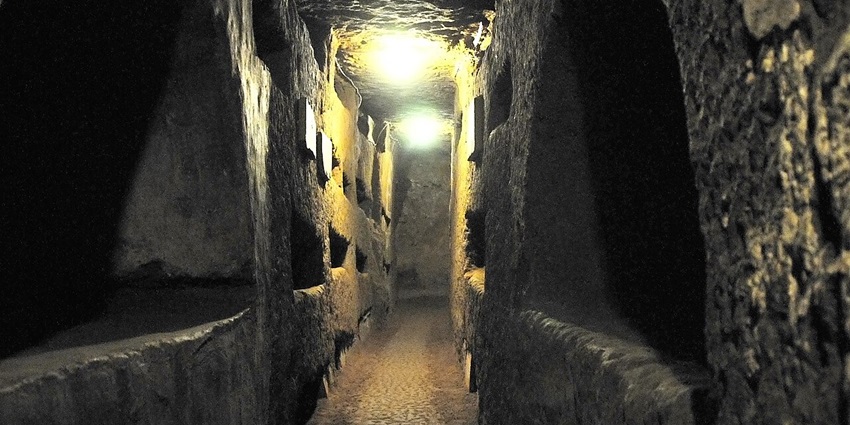
Photo: Dennis G. Jarvis / Wikimedia Commons
Beneath a quiet part of southern Rome lie the Catacombs of Domitilla, the oldest of their kind in the city and among the most extensive. Stretching over 17 kilometres and reaching four levels deep, they date back to the 2nd century CE and hold around 150,000 tombs. These catacombs were built on land donated by Flavia Domitilla, a noblewoman from Emperor Vespasian’s family who was exiled for her Christian faith. Inside, visitors can walk through dim tunnels carved from tuff rock and past niches once sealed with terracotta tiles.
Location: Via delle Sette Chiese, 282
Entry Fee: €8
Timings: 9 AM – 12 PM, 2 PM – 5 PM (closed Tuesdays)
2. Baths Of Caracalla

Photo: Ethan Doyle White / Wikimedia Commons
The Baths of Caracalla opened in 216 CE and were among the largest public bathhouses in ancient historical places in Rome. They stretched across a vast area, roughly 25 hectares and included more than just pools. People came here to work out, walk in the gardens, read in the library, or relax with others. Hot rooms stayed warm thanks to a system where heat from fires below the floors spread through hidden spaces inside the walls. Water came from the Aqua Marcia aqueduct through a special channel made just for this site.
Location: Viale delle Terme di Caracalla
Entry Fee: €8
Timings: 9 AM – 6:30 PM (last entry 5:30 PM)
3. Appian Way (Via Appia Antica)
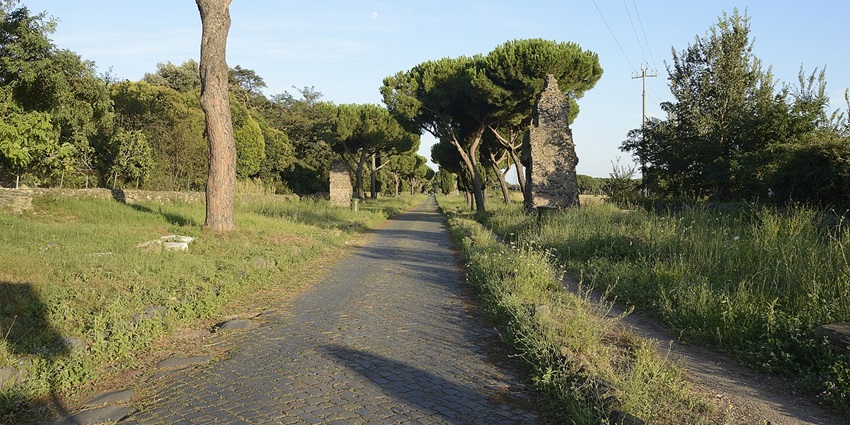
Photo: Livioandronico2013 / Wikimedia Commons
The Appian Way is one of the oldest surviving roads in Rome. Built in 312 BCE, it once connected the city to southern Italy. You can still walk along the same basalt stones laid down over 2,000 years ago. Roman generals, traders, and even funeral processions once used this road. Today, it feels more like a quiet countryside lane than part of a busy capital. Along the way, you will pass old tombs, broken aqueduct arches, and early Christian catacombs. The Tomb of Cecilia Metella, a round tower built for a Roman noblewoman, is still intact after centuries.
Location: Via Appia Antica
Timings: Always accessible
4. Temple Of Saturn

Photo: Diana Ringo / Wikimedia Commons
The Temple of Saturn stands near the western end of the Roman Forum, and its eight tall columns are among the most photographed ruins in historical places in Rome. It was first dedicated in 497 BCE, making it one of the city’s oldest temples. The version you see today was rebuilt in the 4th century CE after a fire, but it still marks the spot where Saturn, the god of wealth and agriculture, was worshipped. This was the place where senators gathered, public records were stored, and major announcements were made.
Location: Roman Forum, Via della Salara Vecchia
Entry Fee: Included with Roman Forum ticket (€16)
Timings: 9 AM – 7 PM (final entry 6 PM)
5. Palatine Hill

Photo: Lil Herodotus / Wikimedia Commons
Palatine Hill is the oldest part of Rome. This is where Romulus is said to have started the city in 753 BCE. When archaeologists dug here, they found the remains of early huts that match the legend. You can still see parts of those early settlements today. The location is high above the Roman Forum, and you get a clear view of the Forum on one side and Circus Maximus on the other. Over the years, Rome’s emperors chose to live here.
Location: Via di San Gregorio
Entry Fee: €16 (includes Roman Forum and Colosseum)
Timings: 9 AM – 7 PM (last entry 6 PM)
6. Castel Sant’Angelo
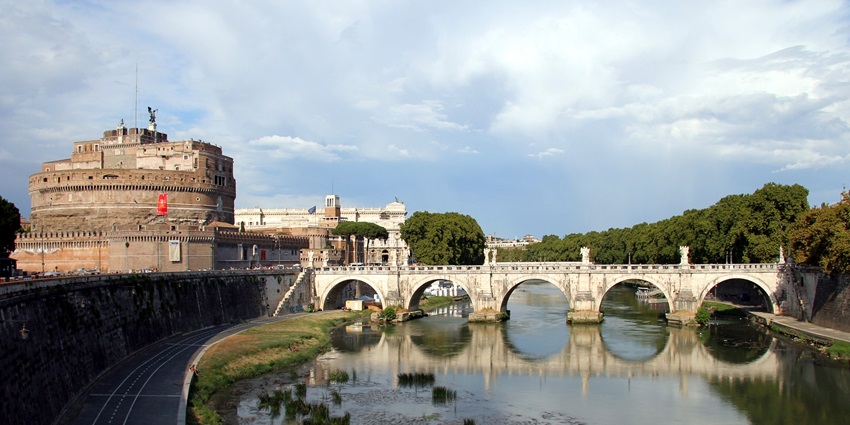
Photo: AngMoKio / Wikimedia Commons
Castel Sant’Angelo was built as a mausoleum for Emperor Hadrian around 135 CE. The round, fortress-like building originally held his ashes and those of his family. By the 5th century, it became a military fortress and later, popes used it as a safe place during invasions. A hidden corridor called the Passetto di Borgo connects the castle to the Vatican, and some popes used it to escape danger. You can still visit the chambers where popes stayed, climb up spiral ramps to see weapons and frescoes and walk out onto the terrace for one of the best views of Rome.
Location: Lungotevere Castello, 50
Entry Fee: €13
Timings: 9 AM – 7:30 PM (last entry 6.30 PM)
7. Capitoline Hill And Museums

Photo: Pascal Reusch / Wikimedia Commons
Capitoline Hill has been tied to Rome’s power for over two thousand years. In ancient times, it was home to the Temple of Jupiter, the most important religious site in the Roman world. The hill still holds meaning today, but its look changed in the 16th century when Michelangelo redesigned the square. He placed an equestrian statue of Marcus Aurelius at the centre and reshaped the space with elegant buildings around it. The three buildings house the Capitoline Museums, which were founded in 1471 and are the oldest public museums in the world.
Location: Piazza del Campidoglio
Entry Fee: €13
Timings: 9.30 AM to 7.30 PM (last entry 6.30 PM)
8. Pantheon
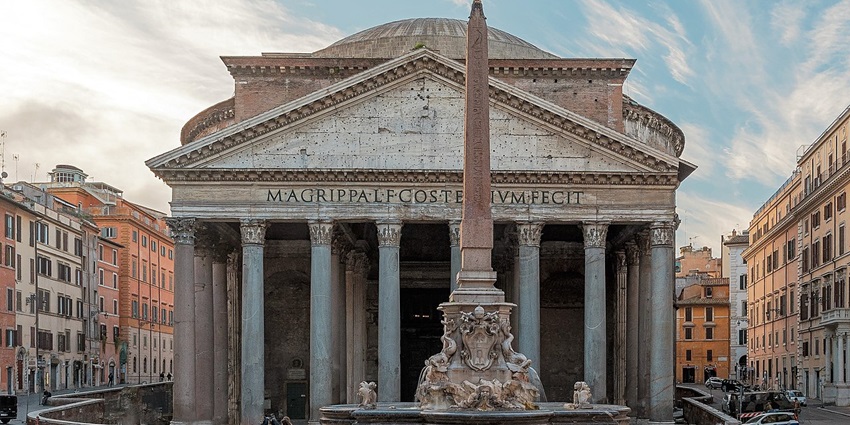
Photo: Rabax63 / Wikimedia Commons
The Pantheon as it stands today was finished during Hadrian’s rule, around 126 CE. The dome stretches over 43 metres wide and reaches the same height from the floor. No steel holds it up, just concrete poured in layers, getting lighter as it rises. The open circle at the top, called the oculus, lets light pour in and rain fall through. This was a temple to all the Roman gods. Then in the 7th century, it was turned into a Christian church, which is why it survived. Inside, you’ll find the tomb of Raphael and Italian kings like Vittorio Emanuele II.
Location: Piazza della Rotonda
Timings: 9 AM – 7 PM (last entry 6.45 PM)
9. The Basilica Of St. Peter

Photo: Livioandronico2013 / Wikimedia Commons
The Basilica of St. Peter stands over what is believed to be the burial site of Saint Peter, one of the twelve apostles and the first pope. The church we see today replaced an older basilica from the 4th century. Construction began in 1506 and was finished in 1626. Bramante started it, Michelangelo designed the dome, and Bernini created the great square in front. Pilgrims and tourists walk past the Pietà, sculpted by Michelangelo when he was just 24, and stop at Saint Peter’s tomb under the main altar.
Location: Piazza San Pietro, Vatican City
Dome climb: €8 on foot, €10 with lift
Timings: 7 AM to 7 PM (April-Sept), 7 AM to 6.30 PM (Oct-March)
10. The Roman Forum
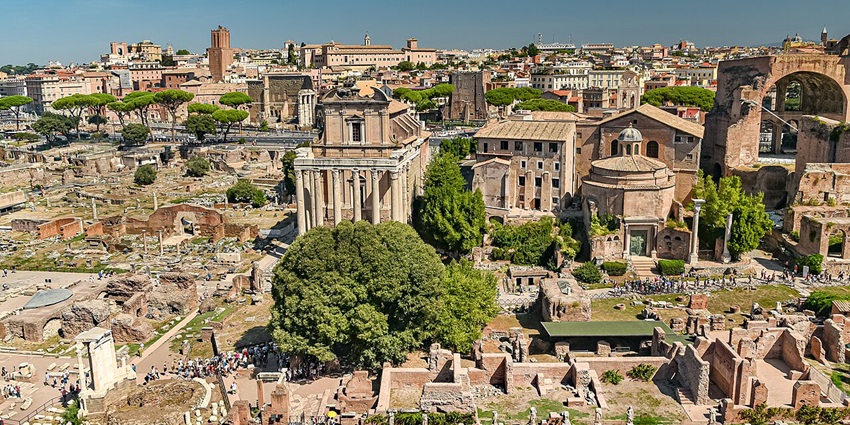
Photo: Jorge Franganillo / Wikimedia Commons
The Roman Forum was the civic and political heart of ancient Rome for over 1,000 years. Located between the Palatine and Capitoline Hills, it developed gradually from the 7th century BCE. The site once held triumphal arches, temples, government buildings, and public squares. It was where citizens gathered for elections, criminal trials, speeches, and religious ceremonies. You’ll see the Arch of Titus (81 CE), built to honour the conquest of Jerusalem; the towering remains of the Temple of Saturn (497 BCE); the Temple of Vesta, once home to the Vestal Virgins; and the Curia Julia, the Roman Senate House completed by Julius Caesar and rebuilt by Diocletian.
Location: Via della Salara Vecchia
Entry Fee: €16 (combined ticket with Colosseum and Palatine Hill)
Timings: 9 AM – 7 PM (last entry 6 PM)
11. The Trevi Fountain
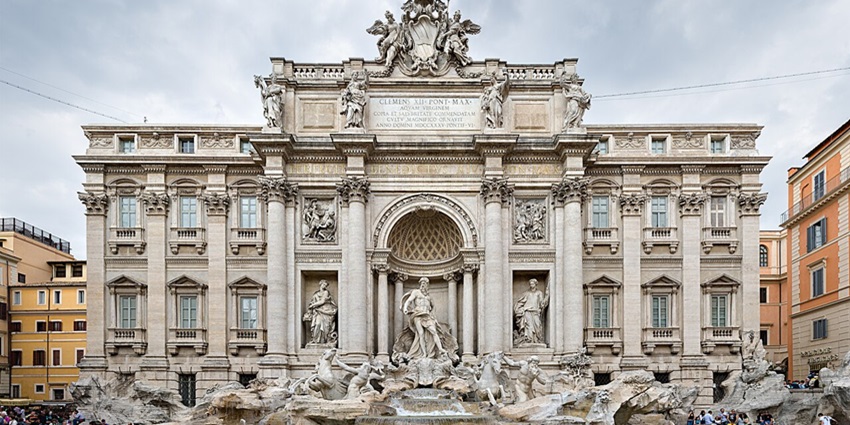
Photo: Diliff / Wikimedia Commons
The Trevi Fountain is the largest Baroque fountain in Rome and one of the most famous in the world. It stands at the junction of three ancient streets, hence the name “Trevi”, from trivium. Its central figure is Oceanus, god of the sea, riding a shell-shaped chariot pulled by two seahorses, symbolising the changing moods of the sea. Tourists gather here day and night, tossing coins over their shoulders into the pool. One coin means you’ll return to Rome, two means you’ll find love, and three means you’ll marry. The coins are collected regularly and donated to charity.
Location: Piazza di Trevi
Timings: 24*7
12. The Colosseum
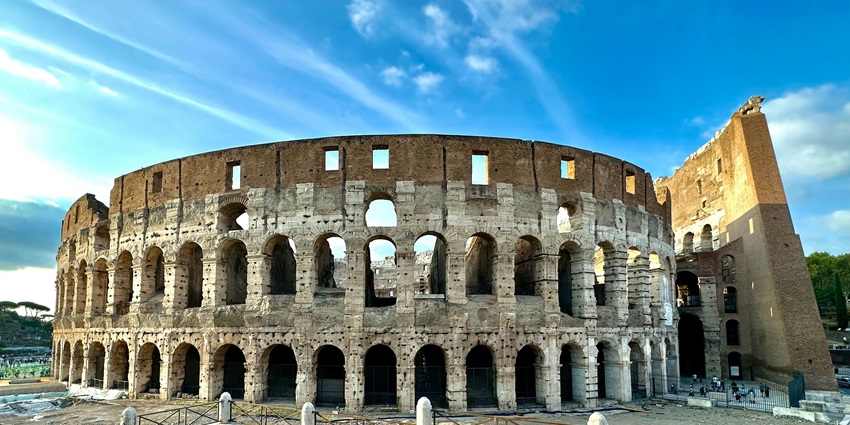
Photo: Airbr3ak3r.ZH / Unsplash
The Colosseum, also called the Flavian Amphitheatre, was built between 72 and 80 CE under Emperors Vespasian and Titus. It held around 50,000 to 80,000 people. This was where the Romans came to watch gladiator fights, wild animal hunts, and public executions. Sometimes, they even flooded the arena to stage mock naval battles. Below the wooden floor was a hidden world of tunnels, lifts, and cages called the hypogeum, used to move animals and fighters to the surface. The building is four levels high and shaped like an oval. The outer wall was made from travertine blocks and held together without mortar.
Location: Piazza del Colosseo
Entry Fee: €16 (includes Roman Forum and Palatine Hill)
Timings: 9 AM – 7 PM (last entry 6 PM)
These streets, arches, and stone walls carry the marks of empires, everyday lives, and centuries of change. The historical places in Rome do not just show what the city was but reveal what it still is. So plan your visit with TripXL today and become part of their long, continuing story. Book your trip for the most seamless and unforgettable experience.
Cover Photo: Caleb Miller / Unsplash


 WhatsApp
WhatsApp
 Twitter
Twitter









